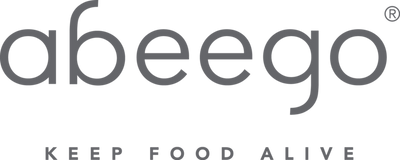How to Start a Community Fridge

Last week, we introduced to you the new Community Fridge at The Number across the street from Abeego HQ here in Rock Bay, Victoria, BC. We chatted with Wren Shaman (Volunteer at Community Fridge Victoria) and Jaime Fogg (Social Media Manager and Junior Production Designer at The Number) to tell us all about Community Fridges and how they work. If you haven’t already, be sure to give it a read here!
To recap, Community Fridges are community-run fridges and pantries to make food free & accessible to everyone who needs it. Simple concept. Big impact.
With food insecurity on the rise and Canada’s largest inflation rate jump in 18 years, access to healthy & nourishing food is more important than ever. Could you imagine the impact if there was a community fridge in every city? In every neighborhood?
One of Abeego’s core values is Hunger to Feed—knowing what you feed grows, we commune around the table and ground ourselves in reciprocity and curiosity, eager to exchange what we have with those around us.
As we have learned from, contributed to, and been inspired by the iconic fridge in Rock Bay, we want to share with you some wisdom and advice from the Community Fridge champs in our neck of the woods should you feel inspired to bring one to yours.

What inspired you to start a Community Fridge in Victoria? How did you become involved? (Wren Shaman of Community Fridge Victoria)
We, a group of volunteers largely from Community Food Support initially, were inspired by the Fridges that were open or opening across North America (and likely beyond). We thought the highly decentralized and low barrier format of food distribution that fridges exemplify would fit in well in Victoria and serve really different needs than lots of the existing food distribution resources. Our volunteers come from all over the place. Some volunteers come from other food distribution programs like Community Food Support, and lots have come together from other ways. We’re always eager to meet new people and play to their strengths and interests to find ways for them to be involved.
What advice would you give to someone wanting to start a community fridge in their own neighbourhood? (Wren Shaman of Community Fridge Victoria)
I would recommend starting by reaching out to see if there’s any existing fridge networks in your area. For example, here in Victoria we’re really looking for people with shared values to start their own fridges and manage them. We really want to provide support in the start, and while running, and share resources and social media, but have people who are passionate about doing some of the more day to day! If there’s no fridge in your area though I recommend checking out this guide by Calgary Community Fridge and reaching out to other fridge social media accounts in your area/province and they can direct you in the right direction!
What advice would you give to other businesses that are looking to get involved in a meaningful way in their local community? (Jaime Fogg of The Number)
Get creative! Meaningful ways to get involved doesn’t have to mean cold hard cash donations (although, obviously those are welcome too). If you don’t have the means to make cash donations, think about some other ways to get involved, whether it’s helping to spread the good word via social media or putting up posters in your shop. Are you a business with clients? You could help spread the word to your clients, or offer discounts to your clients if they support the fridge (or a different community development initiative). Is your business a restaurant? Package up some meals with leftover ingredients after service, label them, and put them in the fridge (remember to check the guidelines before dropping off food donations). Does your business have a snack drawer for lunch? Maybe you could spend the snack money on fridge donations instead every once in a while!
It is with deep respect and gratitude that we create, build and operate our business in the communities of Southern Vancouver Island, which as a business we acknowledge is located within the ancestral and unceded territories of the lək̓ʷəŋən (Lekwungen) (Esquimalt and Songhees), Malahat, Pacheedaht, Scia'new, T’Sou-ke and W̱SÁNEĆ (Pauquachin, Tsartlip, Tsawout, Tseycum) peoples.



Leave a comment